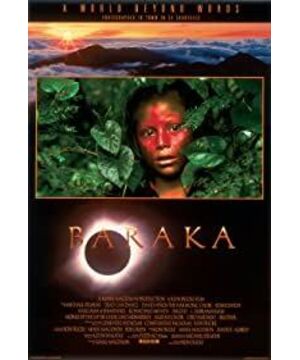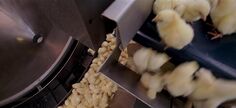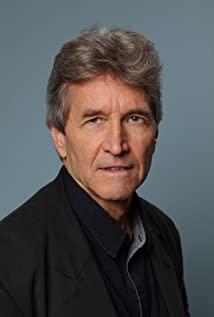In 1992, the documentary "Heaven and Earth Xuanhuang" was born by American director Ron Frick.
This movie takes the evolution of the earth and humans, and the relationship between humans and the environment as themes, and there is no dialogue from beginning to end. The connection between the movie shots is very lively. One second may have been wandering among the magnificent scenery of the mountains and the earth, and the next second will be a Japanese temple or a corner of Hong Kong. The jammed, chaotic and arbitrary editing between the shots left many people confused by the second monk, but it is actually not that difficult to understand the film. Pay attention to the before and after comparison, analogy, and before and after the echoing relationship, etc...For example, a very interesting group of chicks shots: when the chicks are undergoing assembly operations in the factory, the director also selects a busy city and pedestrians. There is a certain degree of similarity between the fast-moving cars and so on, which means that this society is actually a big factory, and each of us will accept the processing and transformation of the social factory like that little chicken... What the
film contains There is a lot of information, and there is no text in the whole article, which makes the film completely free to let the audience try to figure out and feel it. There are too many attractive shots in the film. The shots throughout the film are ingenious and inseparable from other shots. What impressed me was the Japanese dance-Wuta. The whole film appeared twice. The use of these two times is also profound.
Let me briefly introduce Wuta.
"Ankuku Butoh" (Ankuku Butoh), also known as "Dancing Step", was created by Kazuo Ohno and Tatsumi Hijikata (Tatsumi Hijikata 1928-1986) in 1959. It was a combination of traditional Japanese dance and Western modern dance by artists at that time, reinterpreting body language, and A new form of dance that attempts to criticize the Japanese imperial power. The dancers performed the time head nude, the gender was reversed, the body was covered with white powder, and the strange clothes were screaming violently on the stage, and combined with the distorted body language, showing a picture. Almost primitive picture.
Several characteristics of Wuta:
destruction
Like Dada’s slogan, the rise of Wuta is to destroy all traditional concepts of beauty, with weakness, disease, filth... As long as it is excluded by modernization, it must be performed almost realistically, flaunting anti-moral and anti-social negative aesthetics, master Tufang Xun used his thigh to clamp a live chicken to death in a performance. So far, he was removed from the dance association and became the beginning of the dance era.
Laying muscles, hungry skin,
dancing masters believe that ballet and modern dance require elegant dance moves and absolute perfect body language, which is far from life and reality. If reality is cruel, it must be cruel, and reality decay must reflect decay, earthwork sunda Fasting for 10 days before a performance in order to create a realistic image of the locals suffering from starvation and freezing, and that kind of leap and stretch of high-spirited posture is almost extinct in the dance.
Crab feet are
called crab-like legs when they squat in a half-squat shape.
The dance step has appeared twice in the film. And every appearance has a link between the past and the next.
The first time was in a fragment of busy urban life, an indistinguishable person's face was covered with white powder, bursting and shouting. It is not difficult to understand the director's intention based on the characteristics of Wuta and the film, which is to convey to the audience that under the background of modernized life, it seems that society has been highly developed. There are many tall buildings and convenient transportation. People are busy in the city every day, and life seems to be thriving. But what do you see in these lens language? Is there a smiling face? no! All the characters that appeared were expressionless, they stared at the camera blankly, just like their attitude towards life, numbly living a seemingly "good" life. As a result, Wuta's lens appeared, the bursting shouts seemed to release mental pressure, and the distorted face conveyed endless despair and sorrow. But this is life, and you have to continue after venting, so it turns to a scene of a man living in poverty in a donkey cart in a rural Yemeni.
In the second place, after a group of heavily make-up images of women or prostitutes in Bangkok, Thailand, three people in white clothes who are equally difficult to distinguish between genders are dancing. The figure was thin, described as withered, and then side by side, waved to the audience to evacuate in an orderly manner.
The meaning expressed here should be decadence, poverty, weakness and hunger. Reflects the hardships and difficulties of life. From the changes in the previous group of shots, it can be seen that the beggars, women and children living on the streets, and the Brazilian street girls who sell their bodies for their lives... Finally, You Wuta's closing of this set of shots shows the director's ingenuity.
In fact, every shot in this film contains a certain meaning, which is worthy of careful study and repeated chewing.
View more about Baraka reviews








